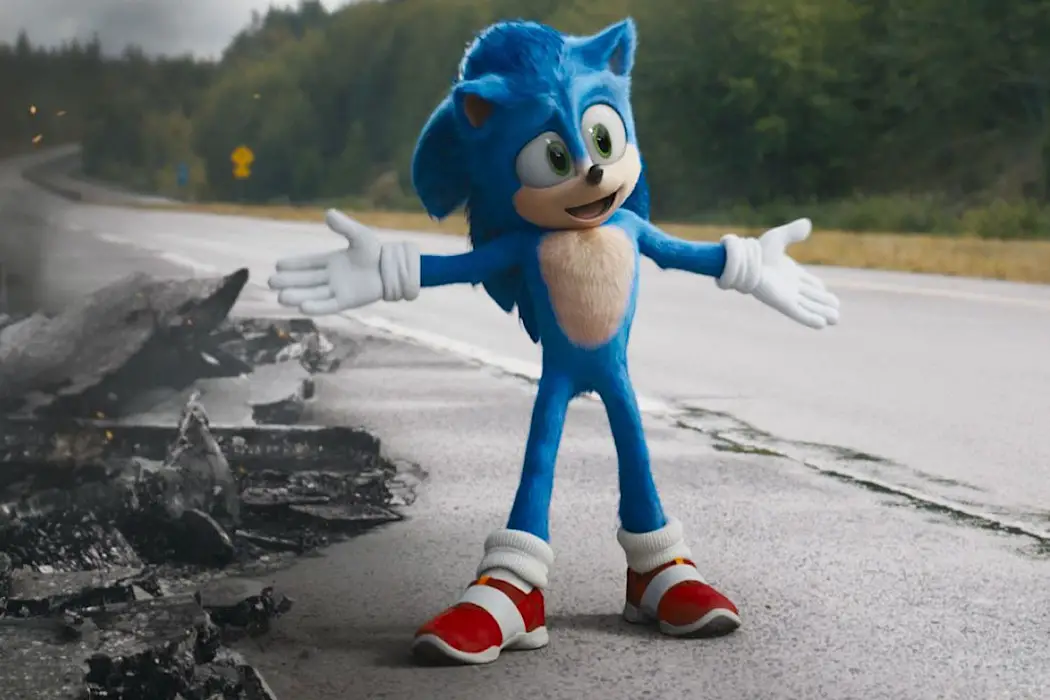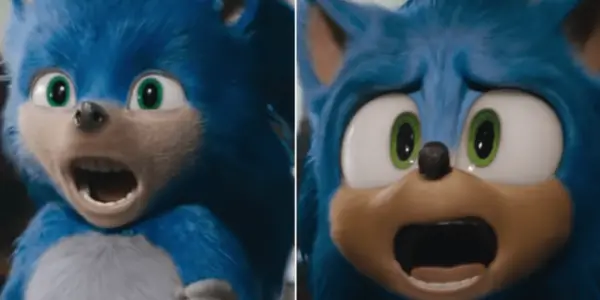WHY DO MODERN MOVIE TRAILERS SPOIL EVERYTHING?

reminder: write a bio here that'll make you sound cool.…
The humble movie trailer: Hollywood’s first impression of any new piece of content.
A trailer has to wow you, intrigue you, make you willing to spend your hard-earned money to go sit in a theatre for 2.5 hours on opening night. Like being on a first date, if you make the wrong impression, the whole relationship could be soured forever.
As a movie lover, I’ve watched a fair few trailers in my day. And as I’ve turned my attention to the Internet, I’ve noticed complaints boiling down to one thing: SPOILERS.
The most common complaint I’ve ever seen about a trailer is that it shows too much. Every glimpse into the film’s plot, characters or even set design is a negative, a sign of the film overplaying its hand, an incentive to stay at home. And, like the annoying contrarian I am, I got to thinking: what is the true purpose of a trailer in 2024? Is it to simply tease the film’s existence? No no, that can’t be it, we have posters and press releases for that. Perhaps to announce the cast? That can’t be it either.
Surely a trailer’s job is to sell you a film? But why does it feel like any attempt to show off a film’s prowess feels like nothing more than 2 minutes of spoiling the film’s experience?
So, I took a look at a look at the trailer for 20,000 Leagues Under The Sea, the 1968 Disney classic. Surely an iconic blockbuster from the golden age of cinema would show us how it’s done!
….
Whoa. If I had never seen 20,000 Leagues Under The Sea, I could have guessed the entire plot based off of that. At nearly 5 minutes, it feels interminably long, and by modern tastes it shows off way too much. I feel as if I watched the movie all over again.
One of the biggest complaints against modern Hollywood is that they spoil too much. I thought it was just a decline in artistry. That Hollywood used to understand a good trailer, dammit, but they just got lazy. But… now it looks like they’ve always operated this way.
So why did we, the moviegoing public, begin railing the same business practices that have seemingly always existed? What changed?
Let’s talk about that.
1: Style Over Substance
A large part of moviegoing’s appeal has been lost due to technological advancements. Spectacle. As CGI becomes more and more advanced, the level of appreciation for new and exciting visuals yields diminishing returns. In the days of yore, movies could sell themselves on being cutting-edge, offering audiences to see a vision brought to life unlike anything they’d ever seen before. The first ever motion picture sold itself as such: audiences could see a train coming right for them, yet they were inside a darkened tent. Nothing like it existed before.
But now? CGI has allowed today’s creators to bring anything to life their mind imagines. But when you’re not bound by reality, the public’s investment wanes. Now that we know we can see anything, it’s hard to feel excited about seeing something new. There’ll be another new thing next week, that the next big auteur dreams up. And on and on and on…
Therefore, trailers have less to sell an audience on. Avatar could show us 5 minutes of alien battles and it would incentivize us to see an entire movie. But Avatar: The Way Of Water does that, and it just feels like spoiling the plot. We know what the aliens look like, we know James Cameron can create epic vistas, so we don’t need that to be highlighted anymore.
2: The Joy is in the Substance
In today’s economy, going to the movies is becoming an increasingly unattainable form of entertainment. A once-inexpensive night out has quickly become an expensive affair, with streaming services & YouTube offering a much cheaper way to consume content.
Therefore, it stands to reason that today’s moviegoing audience is more obsessed on getting their money’s worth from a theatre experience. Complaints of conduct aside, if I make the journey to enjoy a film with a room full of strangers, I want to laugh and cry alongside them. I want to feel every emotion the film has to offer. I want to cheer, be surprised, be taken aback by every little detail.
If I watched the trailer for Avengers: Endgame, I’d be excited. But if I didn’t? If I had no idea how Tony Stark escaped a derelict spaceship and returned to Earth? That’s an emotion I’d feel in the theater, not at home 6 months earlier watching the trailer (which spoiled Tony in the final fight alongside the others). And when I pay $22.50 for a ticket, I’m paying to feel that emotion live and in-person.
3: There’s Not Just An “I” in Internet
In the before times, a viewer’s relationship to a movie was linear. If you wanted to see a trailer, you did. Maybe you bought a poster. There wasn’t much else. The trailer did all the work, having to sell you on the entire film alone.
But with the advent of the internet? Everything has changed. There’s 100x the amount of supplementary content available for every major blockbuster, from deep-dive video interviews to trailer analysis YouTube videos, to fanart…. so much fanart. And thanks to the glory of targeted ads, it’s all right there on our “for you” pages, even if we don’t want to see anything.
And that changes the mentality to a trailer completely. Simply by showing a passing interest to a film, the internet ensures it stays lodged in the back of our subconscious for months simply by osmosis to supplementary content. In a dystopian sense, we’re “sold” subliminally on the movie whether we want to be or not. Therefore, a trailer trying to incentivize us further feels… redundant. Like a car salesman talking up the newest Hyundai Elantra when we’ve already researched car prices for months online.
4: Give Me Some Boundaries
And most importantly, with the rise of late-stage capitalism, younger generations just don’t like being sold to as much.
I like to use Batman (1989) as an example. We remember this campy superhero caper primarily Jack Nicholson’s acclaimed portrayal of the Joker, but at the time, the film made waves for another peculiar reason. It pioneered a merchandising blitz unlike anything seen in Hollywood at the time.
During this time, Hollywood began to realize that more avenues for advertising existed than just the trailer. And certain blockbusters became truly OMNIPRESENT in society. The internet compounded this, allowing movies to dominate the lives of viewers every time they surfed the web. And if you were anticipating the films already, this was great. Every day your hype was compounded.
But if you didn’t like the movie? You were screwed. Pieces of content became inescapable, especially with the increase of targeted ads. For two straight months, I’ve seen Inside Out 2 everywhere I’ve looked. And, as great as the movie looks, I’ve begun to get annoyed. I feel like content is being shoved down my throat. And for people on the fence about a piece of content in 2024, that begins to breed resentment rather than foster curiosity. If I sat down and watched a 4 minute trailer for Inside Out 2, I wouldn’t want to see a speck more content than I’ve already seen. Between all the different ad packages, I’ve probably watched around 25 solid minutes of footage.
How Do We Fix It?
How do we bridge the gap between modern society’s disillusionment with the movie trailer, and the art form itself? Perhaps the answer lies in the original ethos behind the movie trailer: the promise of fulfillment after the consumption of a product. With society’s overreliance on advertising plot and characters, perhaps the marquee trailer itself should return to its old-school roots. Tap into fan ethos, acknowledge that fans will get what they want.
We’ve seen this mentality in action. Sonic The Hedgehog, for example. One of the most symbiotic relationships between a Hollywood product and its intended audience. Following the drastic redesign of Sonic, the new trailer won plaudits for recreating several infamous screenshots with its much more audience-approved design.

And the intent was clear: “We listened to you. This is a film you will enjoy. This is a film that respects its audience, and is devoted to the source material,”. No one was talking about the trailer’s inclusion of Longclaw the Owl, they were applauding the intent behind a Sonic The Hedgehog film being made.
A trailer was always meant to achieve the same purpose. But perhaps by focusing less on the aesthetic choices of the product, and instead connecting the product to society at large, the trailer can once again stand at the top of the advertising mountain where it belongs.
Does content like this matter to you?
Become a Member and support film journalism. Unlock access to all of Film Inquiry`s great articles. Join a community of like-minded readers who are passionate about cinema - get access to our private members Network, give back to independent filmmakers, and more.













